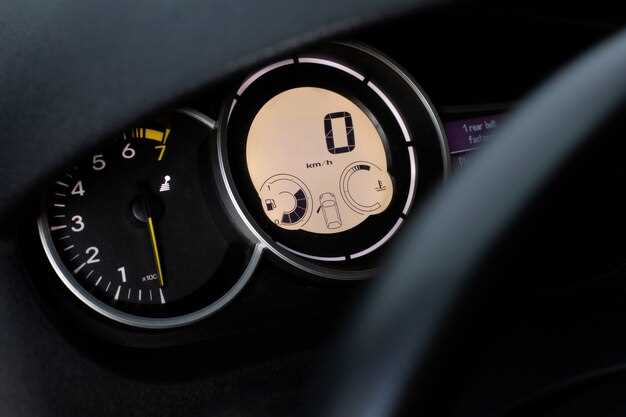
Audi Check Engine Light – Causes and Solutions

The check engine light in your Audi serves as a crucial indicator, alerting you to potential issues within your vehicle’s engine system. Understanding the common causes behind this warning can help you address problems before they escalate. Different codes are generated by the engine’s onboard diagnostic system, each corresponding to specific issues that may affect performance and reliability.
Among the common causes of the check engine light activating in an Audi are issues related to the emission control system, such as a faulty oxygen sensor or an evaporative emissions control system failure. These components are vital for ensuring that your engine operates efficiently and conforms to environmental regulations. Failure of these systems can trigger various diagnostic codes that require attention.
Additionally, faults related to the vehicle’s spark plugs or ignition coils can also lead to engine misfires, causing the check engine light to illuminate. These problems are not only detrimental to performance but can also affect fuel efficiency. Identifying the root cause through the appropriate codes allows for precise fixes, ensuring your Audi remains in optimal working condition.
Understanding Audi Check Engine Light: Key Indicators

The Check Engine Light (CEL) in your Audi is a crucial indicator of potential issues within the vehicle’s engine or emission control system. Recognizing the key indicators that trigger this warning can help you address problems before they escalate.
One common reason for the CEL to illuminate is a loose or damaged gas cap. This can lead to fuel vapors escaping, causing the engine to run inefficiently. Tightening or replacing the gas cap can often resolve the issue.
Another significant cause is a failing oxygen sensor. This component monitors the exhaust gases and ensures the correct air-to-fuel ratio. A malfunctioning oxygen sensor can lead to decreased fuel efficiency and increased emissions, prompting the CEL to activate.
Additionally, an issue with spark plugs or ignition coils can also trigger the Check Engine Light. These components are essential for proper engine combustion, and any faults can result in misfires, poor performance, and increased emissions.
Furthermore, problems with the catalytic converter will often cause the CEL to turn on. This part of the exhaust system plays a vital role in reducing harmful emissions, and its failure can lead to serious engine issues and costly repairs.
Lastly, monitoring the engine’s temperature is crucial. Overheating can activate the CEL, indicating a problem such as a faulty thermostat, low coolant level, or a failing water pump. Addressing these issues promptly helps prevent further damage to the engine.
Understanding these key indicators associated with the Audi Check Engine Light allows you to take proactive measures, ensuring your vehicle remains in optimal condition and reducing the risk of costly repairs.
Decoding Audi Trouble Codes: Common Errors and Their Meanings
When the check engine light illuminates on your Audi’s dashboard, it indicates that the vehicle’s onboard computer has detected an issue. This trigger generates a trouble code that can provide insights into the underlying problem. Understanding these codes is essential for diagnosing and fixing issues effectively.
Audi vehicles utilize a standardized system known as OBD-II (On-Board Diagnostics II) to record trouble codes. Each code consists of a letter followed by four digits, enabling mechanics to decipher the specific issue. Common trouble codes include:
P0300: This code signifies a random or multiple cylinder misfire, indicating that the engine is not firing properly across one or more cylinders. Symptoms include rough idling and a decrease in power.
P0420: This code relates to the catalytic converter’s efficiency. It suggests that the converter is not functioning optimally, which can lead to increased emissions and reduced engine performance.
P0131: This code indicates that the oxygen sensor is reading a low voltage, which may suggest a faulty sensor or an issue with the exhaust system. A malfunction in this sensor can cause poor fuel economy and increased emissions.
P0171: This code denotes a lean condition in the fuel system, meaning there is too much air and not enough fuel. Causes may include vacuum leaks or a malfunctioning fuel injector.
Decoding these trouble codes is the first step in addressing the check engine light issue. Once the codes are retrieved using an OBD-II scanner, you can begin the troubleshooting process to pinpoint the exact cause and implement necessary fixes.
Practical Solutions for Common Audi Check Engine Issues

The Check Engine light can illuminate due to various reasons in your Audi. Understanding these causes can help you identify practical solutions that effectively address problems. Here are some common issues and their fixes.
One prevalent reason for the engine light activation is a loose or damaged gas cap. This issue can allow fuel vapors to escape, triggering an error code. To resolve this, simply inspect the gas cap for cracks and ensure it is tightly secured. If the light remains on after tightening, consider replacing the cap.
Another common culprit is a malfunctioning oxygen sensor. This sensor plays a crucial role in managing fuel efficiency and emissions. If it fails, it can lead to poor performance and increased fuel consumption. Replacing the oxygen sensor is a straightforward fix that can significantly enhance your engine’s efficiency.
Additionally, faulty spark plugs or ignition coils may also contribute to engine issues. Symptoms may include misfiring or hesitation during acceleration. Inspect and replace worn-out spark plugs or coils to restore optimal functionality. Regular maintenance can prevent these components from affecting your engine as well.
Furthermore, issues with the mass airflow sensor can lead to improper air-fuel mixture readings. When this sensor is faulty, it often results in rough idling or decreased power. Cleaning or replacing the mass airflow sensor can resolve these symptoms.
Finally, check for potential exhaust leaks, which can affect engine performance and trigger the check engine light. Inspect the exhaust system for cracks or loose connections and repair as necessary to maintain efficient engine operation.
Addressing these common Audi check engine issues promptly can save time and prevent further damage to your vehicle. Always consult your owner’s manual for specific diagnostic codes and recommended solutions.